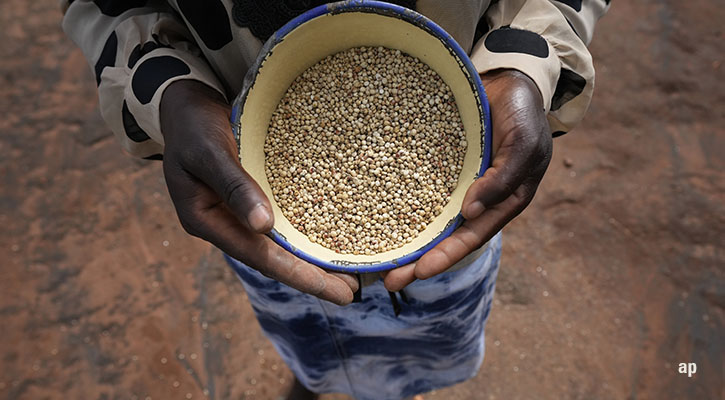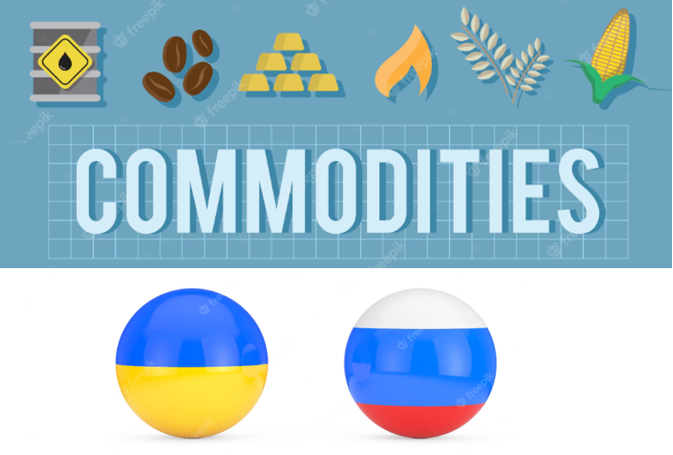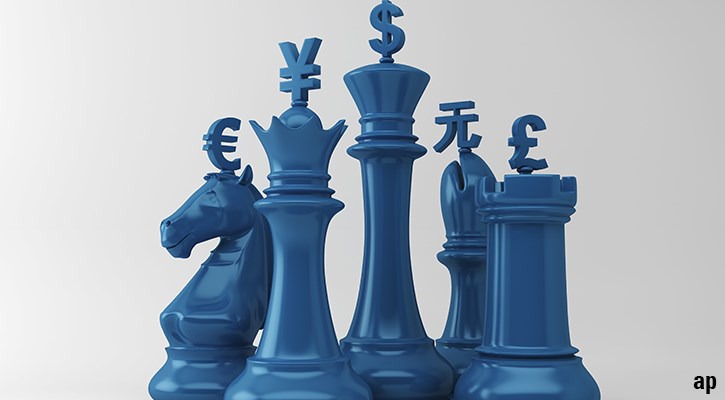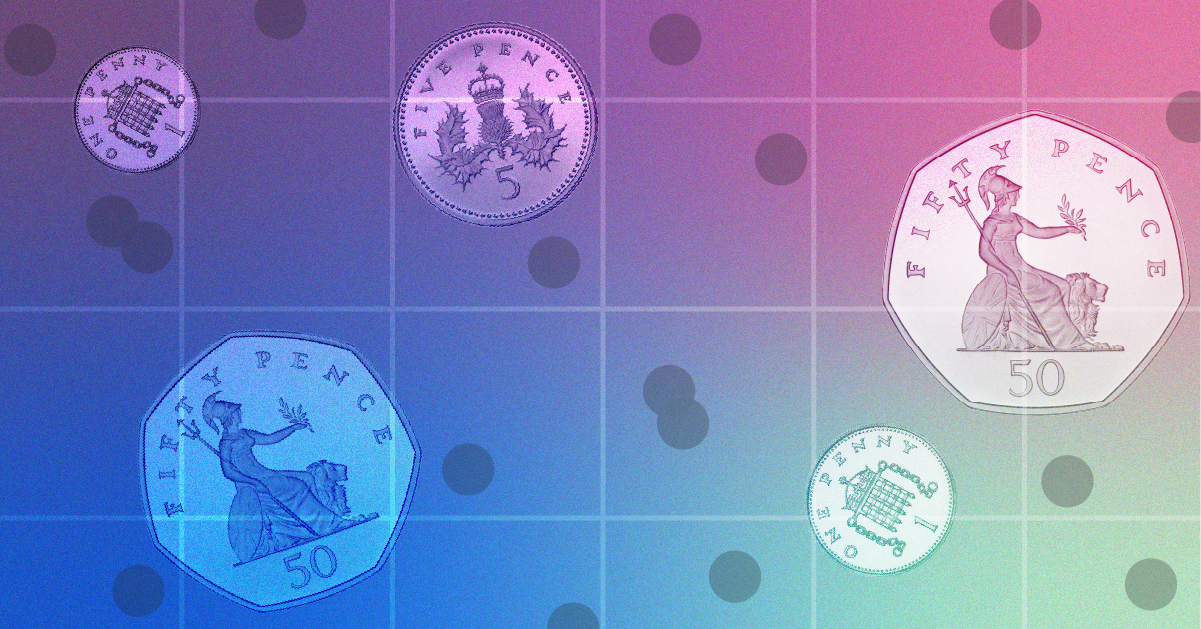
While energy costs appear to be abating in Europe, food inflation is one hangover from Russia’s invasion of Ukraine that seems more persistent. This is particularly the case in the UK, where consumer price inflation is still higher than in the US and Europe.
Economists describe persistently high inflation as "sticky" and that’s what we’re seeing in the UK right now. I’ll look at the factors for world food inflation and where the UK fits into the global matrix of "soft" commodities.
Starting with the wider macro picture, global food prices soared at the start of 2022 because of disruption to Ukrainian supplies to the market. Grain exports were particularly affected. It’s a significant crop because it provides nearly 50% of humans' daily calories through bread, rice, and cereals. It’s also used to feed livestock, which provide dairy products.
The United Nations’ Food and Agriculture Organisation provides a monthly food price index that helps to put last year's events in context. While the annual index price hit a record in 2022, there have been large spikes in prices in previous periods: in January 2023 the index reached 131.2, but that’s very close to the price level seen in 2011. At the start of 2023 the index is actually lower than before the invasion.
The trend line for 2022 shows large increases in March-June, reflecting disruptions caused by war, but then a dropoff as 2022 progressed and more supplies came to market. A similar pattern occurs in the index’s five distinct categories: meat, dairy, cereals, vegetable oils and sugar. All of these categories saw a run-up in prices during the spring, before a tailing off towards the end of the year. All but the vegetable oil category is higher at the end of the year compared to the start. But they're not significantly higher than a year ago.
Grain Blockade Lifted
What could explain this softening in prices? One swing factor could be the lifting of the Russian naval blockade on Ukraine grain exports in July. In a deal brokered by Turkey and the United Nations (UN), these supplies found themselves heading for Europe, having been earmarked for Africa. Brazilian supplies of maize also plugged some of the gaps.
The UN FAO’s chief economist Maximo Torero says there is no room for complacency, despite the encouraging price trends in recent months.
"It is important to remain vigilant and keep a strong focus on mitigating global food insecurity given that world food prices remain at elevated levels, with many staples near record highs, and with prices of rice increasing, and still many risks associated with future supplies," he says.
The UK has been at the sharp end of this spike in food prices: war disruption has been mixed in with ongoing supply issues caused by the pandemic, Brexit, and labour shortages.
And political/currency volatility was also thrown into the mix last year. Importing soft commodities, which are priced in dollars, has been a painful experience for the UK as the pound has fallen against the greenback – GBP nearly reached parity with USD in late September before snapping back to around $1.21 now.
So many basic foodstuffs that Britons took for granted pre-war and pre-Covid are either in scarce supply or rocketing in price. Supermarket shelves are often stripped of value and basic ranges, leaving shoppers faced buying premium offerings or putting them back. Surging costs of meat may even have unwittingly driven shoppers to vegan and vegetarian options, meaning Veganuary may drift into February and beyond.
Soaring Basics
Politicians are particularly sensitive to this as food inflation disproportionately affects the poor; middle-class consumers can shop around, trading Aldi for Waitrose, cutting their non-essential travel and turning their heating down a few degrees.
But for the lowest income households it has come down to "eating or heating" while schools are reporting that some children are showing signs of malnutrition. The government has already intervened directly in the energy market to lower bills, while it's also offering "cost of living payments" which are designed to cover these increases.
In addition, a one-off payment of £1,200 has already gone to eight million low-income households in 2022, and an additional £900 is due to be paid this year. Explaining the rationale behind these schemes, chancellor Jeremy Hunt referenced both the Ukraine war and Covid-19 as significant factors behind the inflation. For more information on this, see the Gov.UK website.
Since inflation took off, every time the Office for National Statistics reports its consumer price inflation data there’s a new eye-watering number to contend with. This month’s startling numbers are olive oil and low-fat milk prices, which were up 44.6% and 45.2% respectively in January from a year ago. Cheese prices were up 30% and butter and egg costs were 20% higher than in January 2022.
Data from industry sources paints a similar picture: the British Retail Consortium (BRC)-NielsenIQ Shop Price Index (SPI) reports that food inflation, especially fresh food, hit a record high in December (ie. the highest since the data set started).
Mike Watkins, head of retailer and business insight at NielsenIQ, said: "The increase in food inflation is going to put further pressure on household budgets and it's unlikely that there will be any improvement in the consumer mind-set around personal finances in the near term. With shoppers having less money to spend on discretionary retail having paid for their essential groceries, there will be little to stimulate demand across the non-food channels."
With food taking up an ever-increasing part of consumer spending, this spells trouble for retailers and service providers of all kinds. For the time being, the UK looks to be dodging recession, albeit narrowly.
Vegetable shortages and the introduction of rationing by supermarkets this week are yet another illustration of Britain's fragile food chain.
Read This
Commodity Prices After the Ukraine War
Supplies and Demands
The war in Ukraine has disturbed the complacency Europe feels in the supply of essential goods like energy and food. Perhaps this is long overdue. The West is, after all, just catching up with global trends – for many years food insecurity has been a scourge of developing countries, which have been more sensitive to bad harvests, extreme weather, drought, floods and even military conflict. As with the management of all scarce resources, politics has become involved – and has led to accusations of "beggar thy neighbour" policies and rich nations outbidding poorer ones.
Globalisation in theory assumes that demand in one part of the world for a product or service is met by one in another – and the market decides the price and the quantity follows. That holds for grain as it does for electric vehicles and semiconductors. The West rarely goes hungry in this model.
But that comfortable view of the world has been shaken up, perhaps forever, by military conflict in Europe, trade wars, and a rise in protectionism. As with energy, Europe is now looking to diversify its food sources so it's not caught out again.
Where Next?
Morningstar analyst Ioannis Pontikis says that agricultural and commodity and food prices have always been volatile. While prices for the most critical goods such as wheat and palm oil are lower than their peak last year, they're still at elevated levels and contributing to strong inflation prints.
A drop in prices is coming, but not for a while, he says
"The outlook for 2023 food prices still looks mixed and uncertain, with low inflation and potentially deflation only taking place in the back end of the year."
There could be more pain to come for consumers, even though large companies like Nestle and Unilver have already passed on price increases.
"Still, we do expect a continuation of price increases in 2023, though at a lower level than in 2022, given still inflationary pressures in wages but more importantly, raw material inflation that these companies were not able to pass on in 2022 because inflation materialised after their annual negotiations with retailers."




























